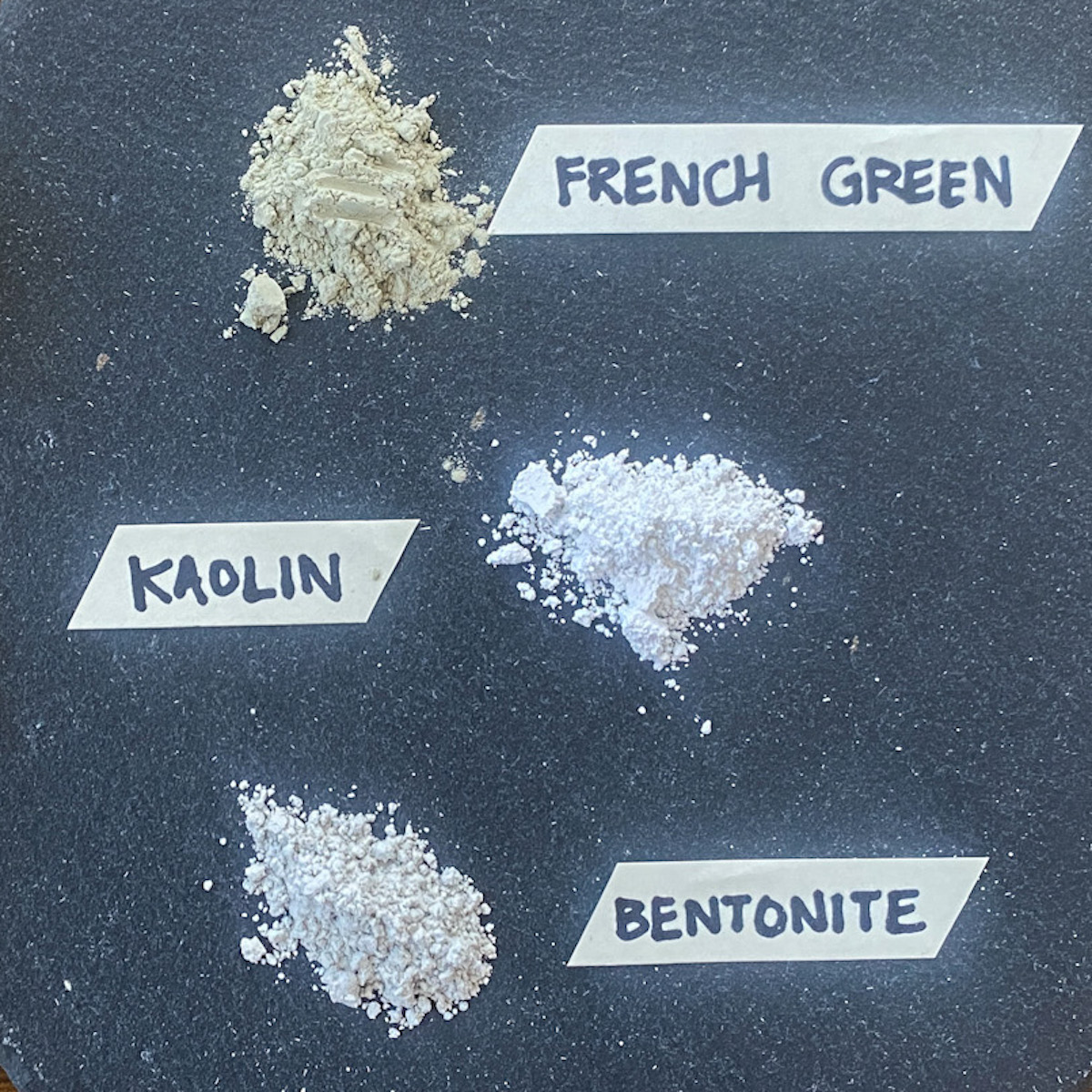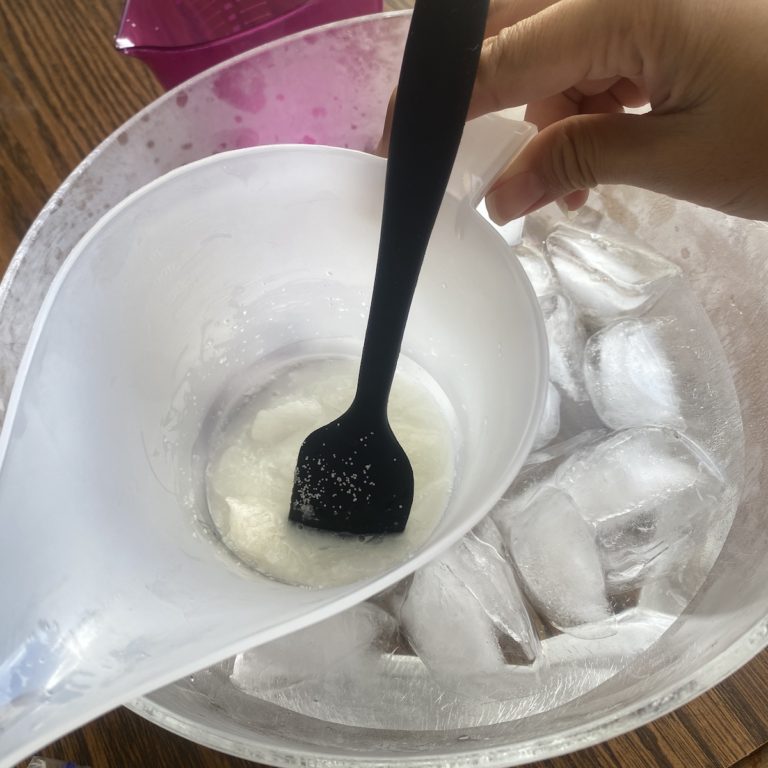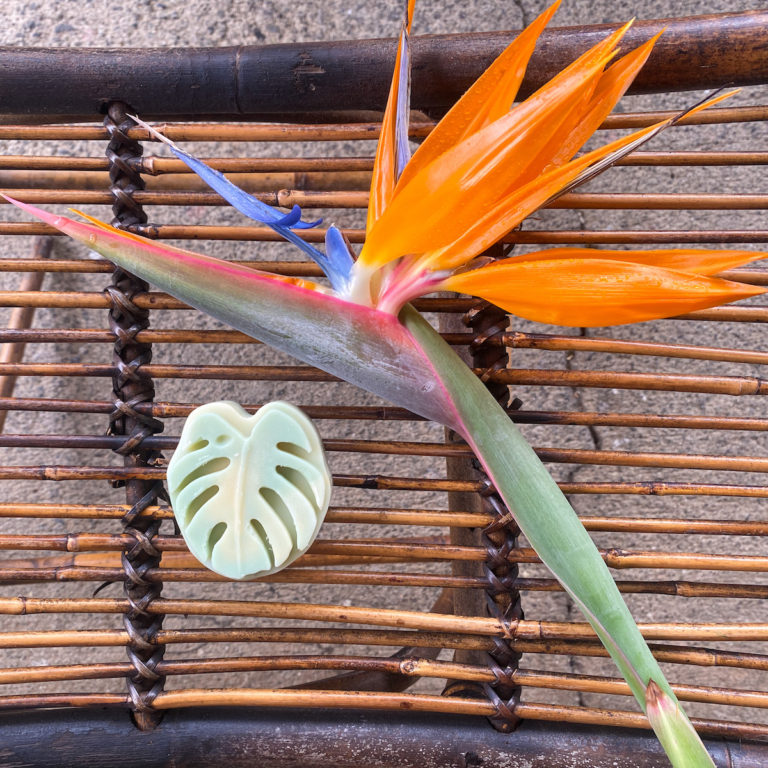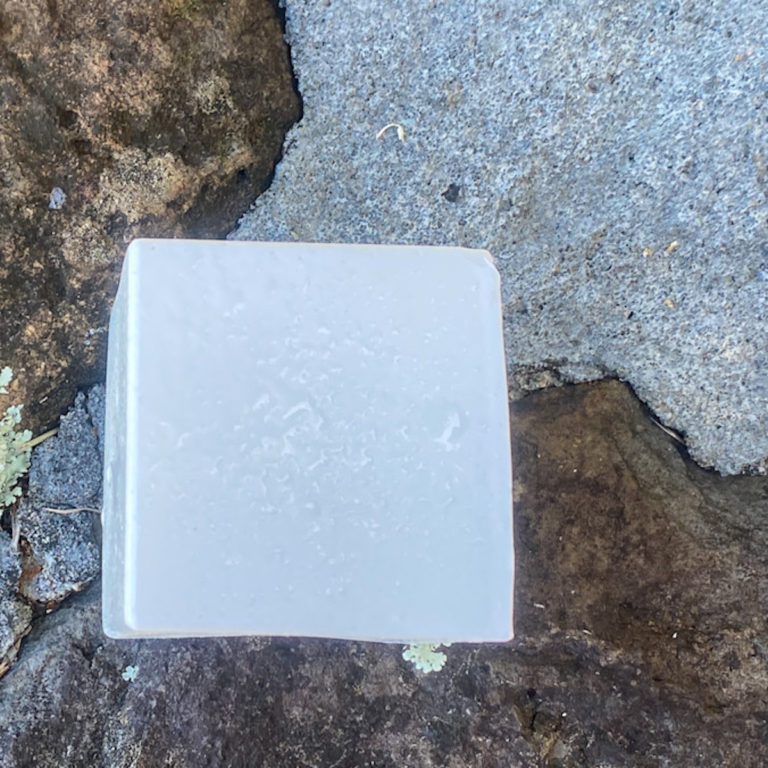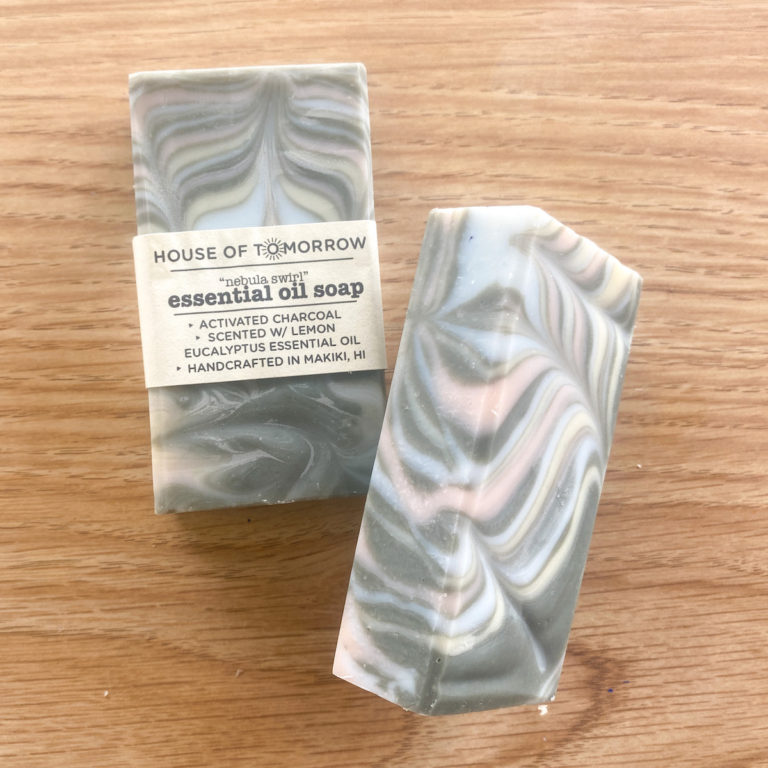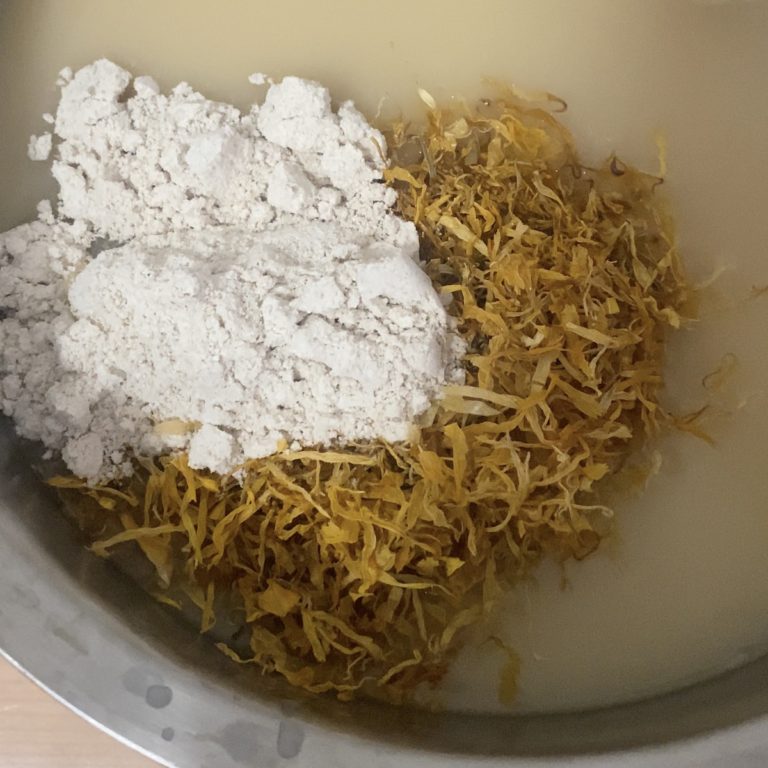How To Add Clay to Handmade Soap – The Clump-Free Method
Clay is such a wonderful addition to a soap formula. I use it almost every bar I make. But do you know how to add clay to handmade soap the right way? Being haphazard about it could result in batter that’s difficult enough to work with that you give up and succumb to having an ugly and inconsistent bar.
Like many other things in life, there’s more than one right way to do something. I would suggest that in whichever method you choose, you add clay into your batter and blend it in AFTER emulsifying your oils and lye.
How to Add Clay to Handmade Soap Using Water
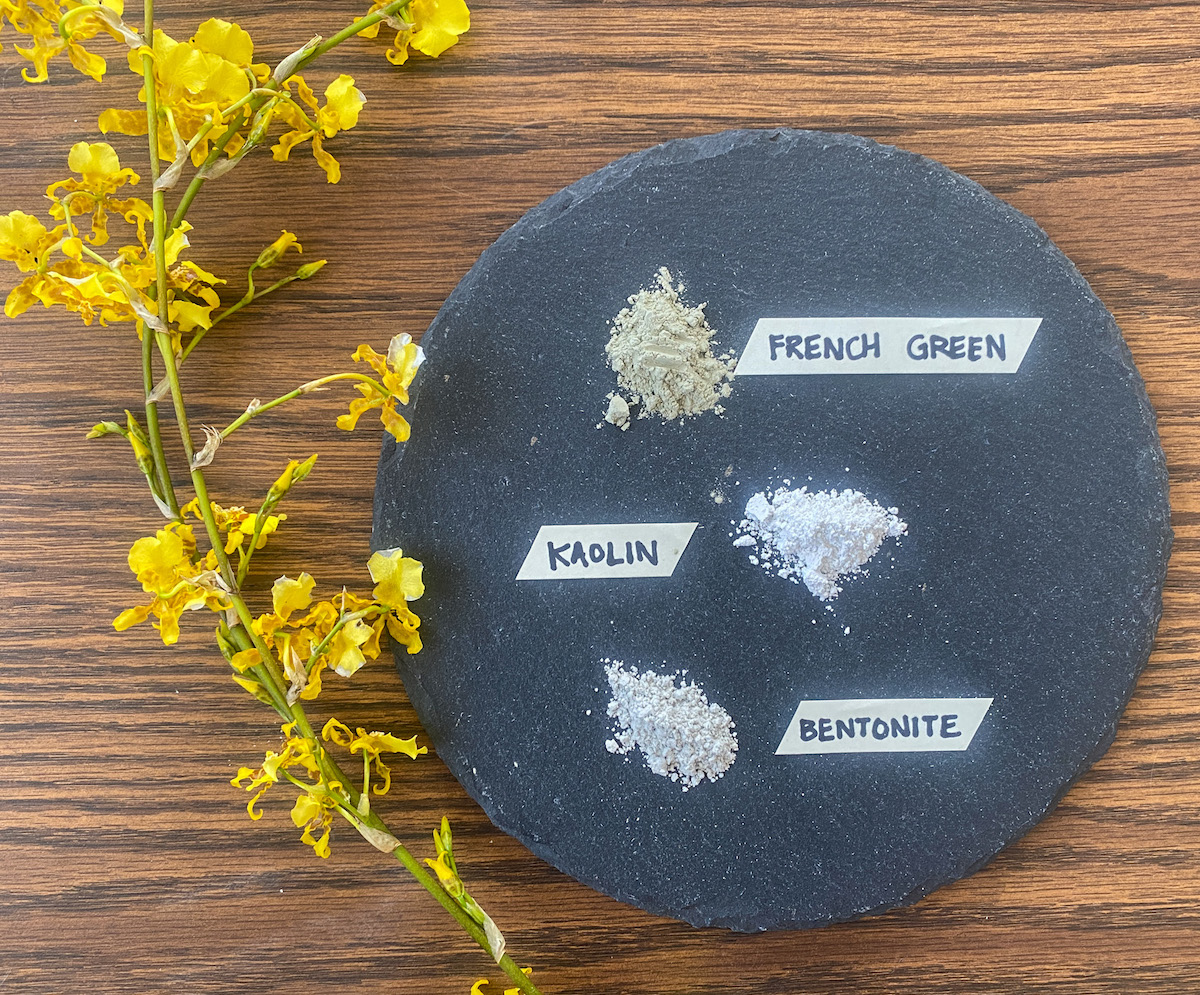
Let’s start with using water to incorporate clay into your batter. Measure out your clay and mix a little bit of water into your clay at a time. You’re looking to reach the consistency of a milkshake, or thinner. Too thick a clay paste and it’ll be a hard lump that you struggle to blend into your batter.
The water could be an additional amount on top of what you would normally put in your formula, and that’s fine, but it could lengthen the amount of time it takes for your soap to harden during cure, since its adding more water that needs to be evaporated out. I’ve found that sometimes having high water content in soap can also contribute to soda ash. Others also find that it increases the chance you’ll see glycerin rivers.
To remedy this so that you’re not adding additional water to your recipe, you could reserve some of the water you would have used to make your lye solution, for mixing with the clay. If you do this, you just really want to be sure you leave an equal or greater amount of water than lye for your lye solution (at least 1:1), as lye needs at least that much water to fully dissolve.
How to Add Clay to Handmade Soap Using Essential Oils
This is the method I personally use and love. As you would guess, this only works when you’re actually using essential oils (or fragrance oils if you use those), so it wouldn’t be the method you turn to if you’re making an unscented soap.
Here you basically use your essential oil blend to wet the clay you’re adding to your recipe, and blend it in after reaching emulsion.
I like to soak the clay in essential oils overnight or longer, as some say it helps the essential oil scent to anchor better if you let it soak in the clay longer.
Benefits of Clay in Soap
That leads me to my next points – why you would even want clay in your soap to begin with.
Anchoring scents to help them last longer is a big one to me, as someone who uses essential oils exclusively to scent soap. As you may know, essential oils are often not as strong as fragrances, they tend to be more expensive, and they’re more finicky. They also have maximum usage rates that I would never go over since EOs can have a therapeutic effect on the body and I definitely want to respect those boundaries. So I can’t just keep adding more and more essential oils to the batter to get a stronger or longer lasting scent. I have to turn to solutions like learning a lot about blends that hold well and about different ways to anchor the scent. Clay happens to be a great way to do this, and what makes it even better is that it presents additional skin benefits as well.
Although there are many different types of clays with different properties, one thing they usually have in common is they have a negative electrical charge that binds to the crap you don’t want on your skin. Then when you rinse the clay away, off comes the excess junk from your skin too, be it environmental toxins like pollution, excess oil, or heavy metals.
What to Expect When Adding Clay to Your Soap Formula
You may find, depending on how much clay you use, that it speeds up trace and/or thickens your batter. If you use high amounts of clay, expect to work a little quicker than you normally do for this reason.
How Much To Use?
My advice is to start small, and figure out from there how you want to adjust. Try 1 teaspoon of clay per pound of soap if its your first time, see how it affects your formula and your finished product, then increase or decrease the amount of clay if you want to. Creating soap that ends up just the way you want it is an iterative process, so you’ll have to experiment.

